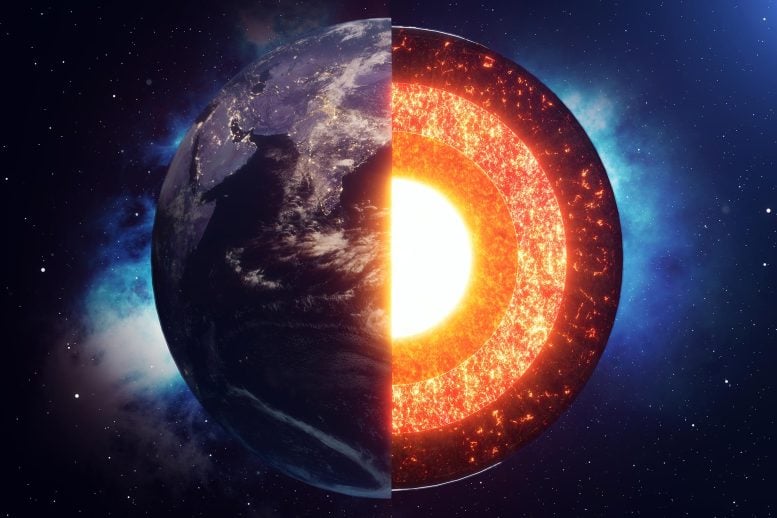
The early Earth’s highly oxidized mantle could have led to a Venus-like surface environment. The present state of the upper mantle may have been influenced by metallic iron from materials added after Earth’s formation.
How has the atmosphere and mantle oxidation state of the Earth changed?
The connection between a planet’s interior and its surface plays a pivotal role in comprehending the formation of a planet’s surface environment. The distribution of ferrous (Fe2+) and ferric (Fe3+) iron in the mantles of rocky planets determines the oxidation state of the mantle. This, in turn, influences the composition of volcanic gases and the mantle’s capacity to store volatiles, including critical, life-essential elements like hydrogen and carbon.
Therefore, determining the distribution of Fe2+ and Fe3+ in the mantle immediately after its formation offers crucial information about the surface environment prior to life emergence and the beginnings of habitable planets.
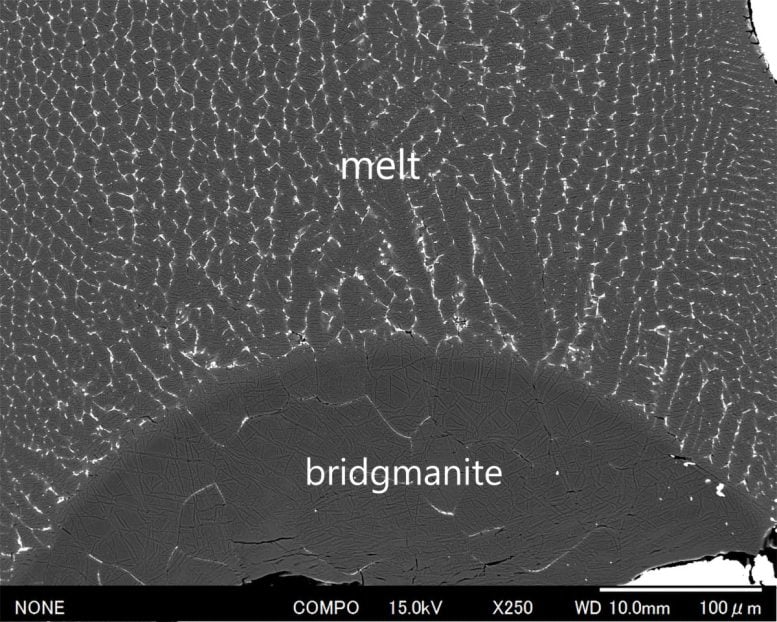
The dark region in the lower part of the image shows crystalized bridgmanite, and the dendritic texture in the upper part indicates quenched melt. Credit: Geodynamics Research Center, Ehime University
Previous Research and New Insights
In prior research, the scientists showed that the Earth’s magma ocean was more enriched in Fe3+ than the present upper mantle, and therefore, highly oxidizing (Kuwahara et al., 2023, Nat. Geosci.). A question arose: How did the upper mantle’s oxidation state decrease to what we observe today? To find an answer, the scientists explored the potential for Fe3+ to be integrated into the lower mantle during the magma ocean’s crystallization phase.
Crystallization and Atmosphere Implications
The findings revealed that the crystallization of bridgmanite, the most dominant lower mantle mineral, does not preferentially incorporate Fe3+ compared to coexisting magma. This indicates that the early Earth’s upper mantle was also highly oxidized if the Earth’s magma ocean was rich in Fe3+. The atmosphere formed by the degassing of volatiles from such a highly oxidizing mantle would have been rich in CO2 and SO2, thereby forming a Venus-like surface environment.
Because the magma ocean crystallization process cannot reduce the upper mantle’s oxidation state, the authors have proposed the reduction of the upper mantle by metallic iron contained in late-accreting materials after the formation of the Earth. Indeed, the amount of metallic iron delivered by late accreting materials constrained by the abundance of highly siderophile (iron-loving) elements in the Earth’s mantle is comparable to that required to reduce the upper mantle’s oxidation state to the present.
Further geological constraints on the oxidation state of the mantle are necessary to test this hypothesis.
Reference: “Partitioning of Fe2+ and Fe3+ between bridgmanite and silicate melt: Implications for redox evolution of the Earth’s mantle” by Hideharu Kuwahara and Ryoichi Nakada, 25 May 2023, Earth and Planetary Science Letters.
DOI: 10.1016/j.epsl.2023.118197

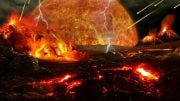


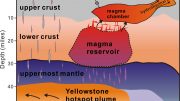


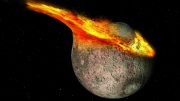

Be the first to comment on "From Core to Crust: The Significance of Magma’s Oxidation in Earth’s Formation"